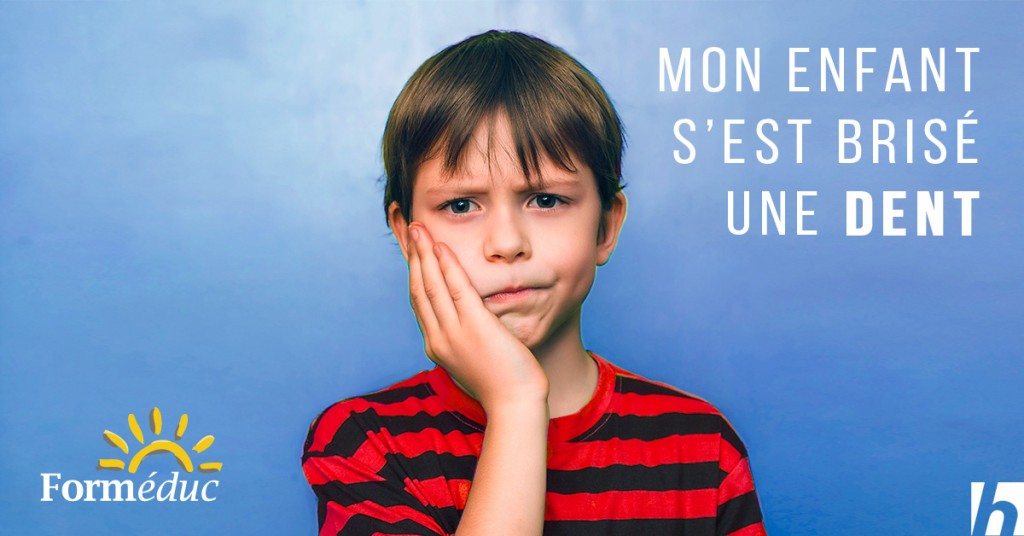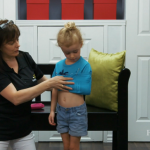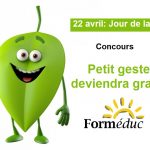

- 2 August 2023
- |
- Andrée Bouchard
Antoine has just come home crying. He fell and lost a tooth…
It’s common for children to injure their teeth. Dental injuries can result in lost, loose, displaced or broken teeth. These injuries most often involve the incisors of the upper jaw, but also the lips, gums and cheeks. Mouth injuries are often painful and may bleed profusely.
When a child injures his teeth, refer to these 3 steps:
- Check the child’s condition.
The impact may have caused trauma such as a jaw injury, weakened teeth, swelling or pain. If the child is experiencing breathing difficulties, altered consciousness or you suspect head, neck or spinal injuries, call 9-1-1. If the child is bleeding, control the bleeding by applying a gauze pad.
- Recover the broken tooth or piece of tooth.
If the tooth is dirty, rinse it gently under water, holding it by the crown to avoid touching the roots. Do not dry out the tooth! You risk damaging the tooth and compromising its implantation. Instead, place it in milk, if possible, or water. If it’s just a piece of tooth that’s been broken off, take the same precautions to preserve it as much as possible. If the pulp has not been damaged, the dentist can glue the tooth back together, or use it as a model to rebuild a tooth of the same shape as the original.
If a baby tooth becomes detached or displaced from its normal position, do not attempt to replace it.
- Take the child to the dentist.
It is the dentist who will determine the treatment to be followed. Ideally, the child should be seen by a dentist within an hour of the accident. It’s important to treat dental injuries promptly to achieve optimal results. Contact a dentist if lips, gums or jaws are injured.
Once back home
The dentist may recommend a specific diet to preserve teeth during the healing period. This usually involves avoiding hard foods, but does not necessarily mean a liquid diet.
Oral hygiene
It’s important to care for teeth and gums to speed up healing. If the peripheral tissues are not damaged, teeth can be brushed normally. Rinsing the mouth with a saline solution can also reduce the risk of inflammation.
The advice given in this article is not a substitute for a first-aid course. To register for one of our courses: www.formeduc.ca/secourisme




